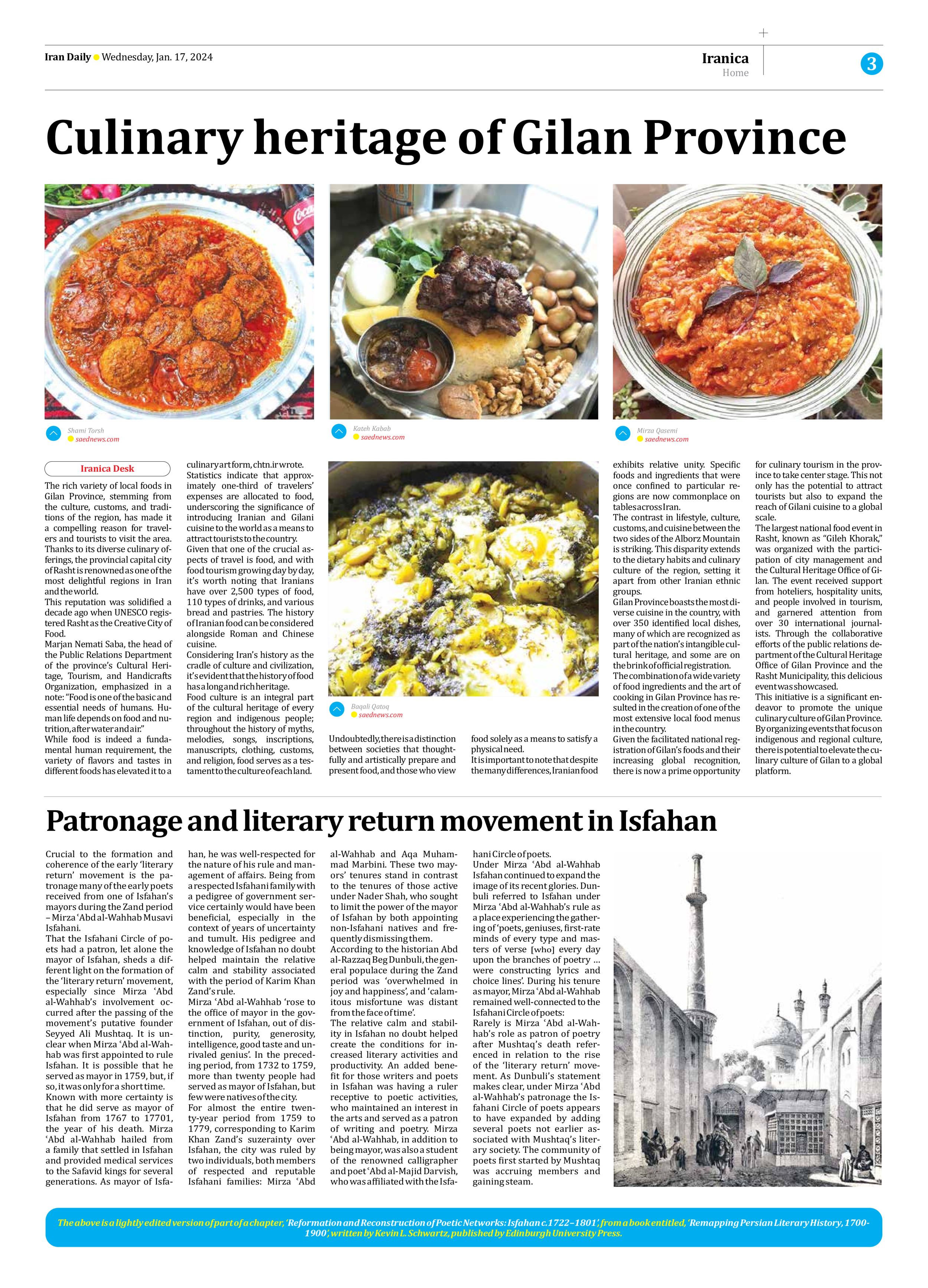
Culinary heritage of Gilan Province
The rich variety of local foods in Gilan Province, stemming from the culture, customs, and traditions of the region, has made it a compelling reason for travelers and tourists to visit the area. Thanks to its diverse culinary offerings, the provincial capital city of Rasht is renowned as one of the most delightful regions in Iran and the world.
This reputation was solidified a decade ago when UNESCO registered Rasht as the Creative City of Food.
Marjan Nemati Saba, the head of the Public Relations Department of the province’s Cultural Heritage, Tourism, and Handicrafts Organization, emphasized in a note: “Food is one of the basic and essential needs of humans. Human life depends on food and nutrition, after water and air.”
While food is indeed a fundamental human requirement, the variety of flavors and tastes in different foods has elevated it to a culinary art form, chtn.ir wrote.
Statistics indicate that approximately one-third of travelers’ expenses are allocated to food, underscoring the significance of introducing Iranian and Gilani cuisine to the world as a means to attract tourists to the country.
Given that one of the crucial aspects of travel is food, and with food tourism growing day by day, it’s worth noting that Iranians have over 2,500 types of food, 110 types of drinks, and various bread and pastries. The history of Iranian food can be considered alongside Roman and Chinese cuisine.
Considering Iran’s history as the cradle of culture and civilization, it’s evident that the history of food has a long and rich heritage.
Food culture is an integral part of the cultural heritage of every region and indigenous people; throughout the history of myths, melodies, songs, inscriptions, manuscripts, clothing, customs, and religion, food serves as a testament to the culture of each land.
Undoubtedly, there is a distinction between societies that thoughtfully and artistically prepare and present food, and those who view food solely as a means to satisfy a physical need.
It is important to note that despite the many differences, Iranian food exhibits relative unity. Specific foods and ingredients that were once confined to particular regions are now commonplace on tables across Iran.
The contrast in lifestyle, culture, customs, and cuisine between the two sides of the Alborz Mountain is striking. This disparity extends to the dietary habits and culinary culture of the region, setting it apart from other Iranian ethnic groups.
Gilan Province boasts the most diverse cuisine in the country, with over 350 identified local dishes, many of which are recognized as part of the nation’s intangible cultural heritage, and some are on the brink of official registration.
The combination of a wide variety of food ingredients and the art of cooking in Gilan Province has resulted in the creation of one of the most extensive local food menus in the country.
Given the facilitated national registration of Gilan’s foods and their increasing global recognition, there is now a prime opportunity for culinary tourism in the province to take center stage. This not only has the potential to attract tourists but also to expand the reach of Gilani cuisine to a global scale.
The largest national food event in Rasht, known as “Gileh Khorak,” was organized with the participation of city management and the Cultural Heritage Office of Gilan. The event received support from hoteliers, hospitality units, and people involved in tourism, and garnered attention from over 30 international journalists. Through the collaborative efforts of the public relations department of the Cultural Heritage Office of Gilan Province and the Rasht Municipality, this delicious event was showcased.
This initiative is a significant endeavor to promote the unique culinary culture of Gilan Province. By organizing events that focus on indigenous and regional culture, there is potential to elevate the culinary culture of Gilan to a global platform.







